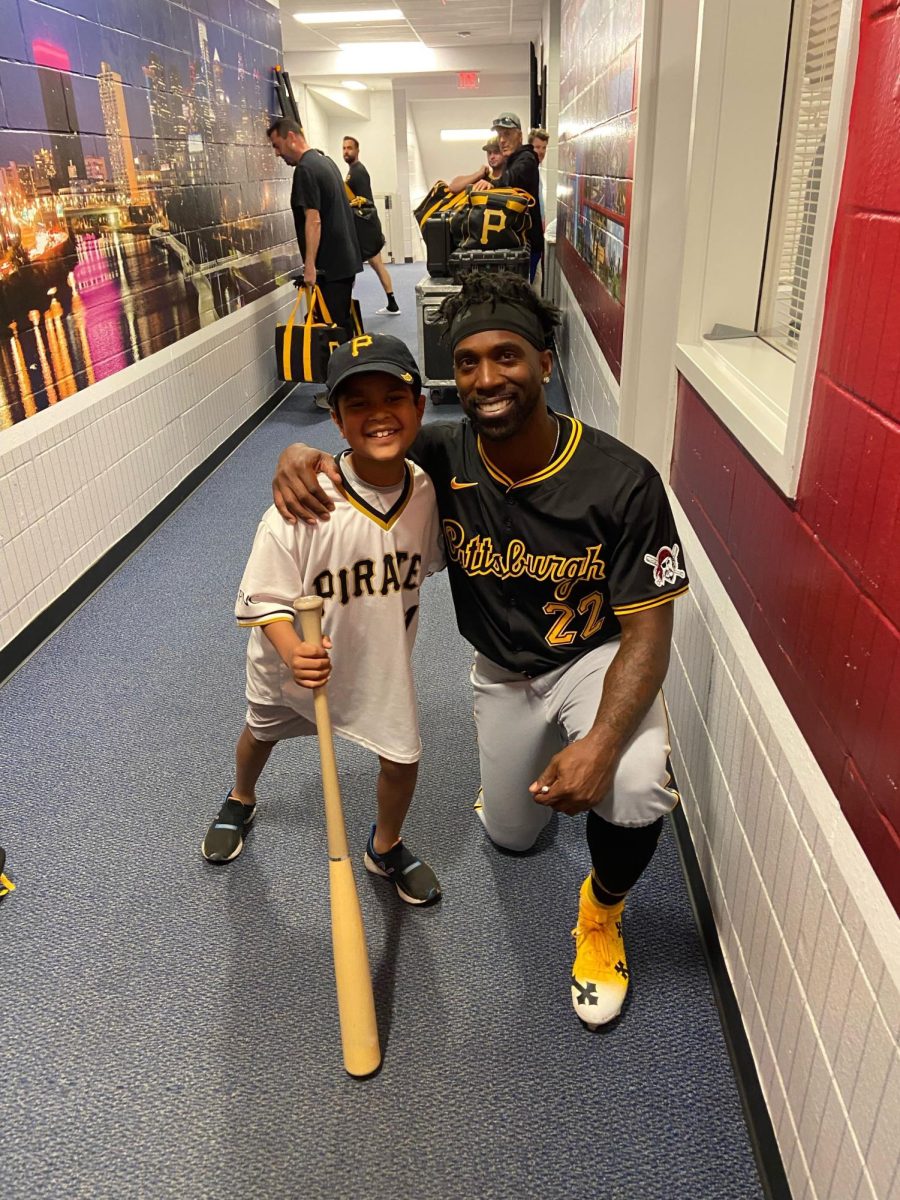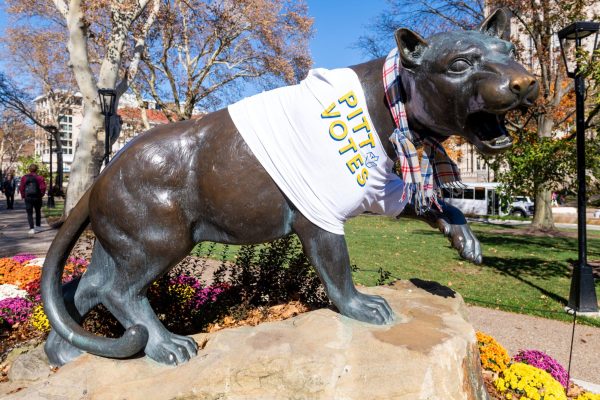Pitt students go medieval
January 19, 2011
A Pitt freshman walks into Towers lobby, dragging a wooden sword on the ground as he weaves… A Pitt freshman walks into Towers lobby, dragging a wooden sword on the ground as he weaves through the crowd, trying to balance the armor strewn across his shoulders.
He scrambles to find his Pitt ID, carefully making sure he doesn’t drop his gear. When he reaches his room, he chucks the clunking armor under his twin bed and leans the sword against the closet wall.
That sight isn’t as common at Pitt as it was during the heyday of the Medieval Interest Club, but it is one that current club members hope to keep a reality. One former member said that when she attended Pitt nearly 13 years ago club members could often be seen donning their armour in the dorms, but recently, enrollment has been low, and the unusual club is barely active.
The club’s adviser, Barton Branstetter, described the flux of student membership as similar to a “waxing and waning” effect — the numbers are never consistent from year to year. To supplement their numbers, Pitt’s group works with Carnegie Mellon’s club and the local Society for Creative Anachronisms, another organization dedicated to recreating aspects of medieval society.
The group tries to reenact the society, culture and combat of the Middle Ages — generally considered the period from the fall of Rome until the Renaissance. The Medieval Interest Club still takes part at the Pitt Activities Fair in August. It usually has a pair of fighters in armor squaring off behind its table.
Contrary to Live Action Role Playing, a game in which participants fantasy role play and reenact battles with foam weapons, the Medieval Interest Club participates in local battle simulations that replicate the Middle Ages as closely as possible.
The society seeks to recreate all the aspects of the medieval culture: Participants choose era-appropriate pseudonyms, learn about ancient trades and combat and speak in the appropriate vernacular during meetings.
“The Renaissance Fair is geared toward tourists and for profit making,” Branstetter said. “Our group focuses on education.”
But members sometimes make money by selling goods like armor and homemade calligraphy.
“The games are staged, but we’re inspired by historical battles,” said Amy Costello, a Society for Creative Anachronism member. “When fighting you find that what worked then, works now.”
The groups work with weapons made out of rattan, a bamboo-like wood that, unlike bamboo, is not hollow.
Usually the weapons are wrapped in duct tape to give them a metallic look. Group members also purchase or make helmets and shields out of 14-gauge steel plates.
Students can make at least two weapons out of the standard 10-to-12 foot long rattan stick. Rattan costs between $10 and $20, and students can make armor out of plastic milk containers. The helmets typically cost the most because they are made from steel plates.
Hand weapons and archery are also components of the reenactments, Branstetter said.
“We’re trying to hurt each other,” Branstetter said.
Like real battle, the combatants try to defeat their enemies. A fighter who hits the opponent in the head or body can score a “kill.” No fighter is permitted to hit below the knees, and if an arm or leg is hit, then that soldier can not play with that limb.
Judging “kills” depends on a code of chivalry. It is solely a judgment call for the struck knight to decide if he has in fact been killed. The system works well, members said, as chivalry is a founding principle in the group.
The group also has a nickname for a fighter who does not go down, called a “Rhino,” because nothing penetrates their skin. The society has some oversight for the battles as field marshals are present to make sure all players act in accordance with the rules.
Melees and tourneys are the simulations commonly performed at events. Melees are cacophonous free-for-all battles that feature large opposing forces following orders from a commander. Tourneys are for smaller factions to fight each other.
The Society for Creative Anachronisms keeps first aid responders on site for all battles. The group’s first aid staff members are called chirurgeons. For more serious injuries, they dial 911.
“You can’t be whacking people around and not occasionally get hurt,” Krista Cogan, president of Pittsburgh’s Society for Creative Anachronisms, said.
All combatants must sign a waiver before they participate.
Members of the clubs also indulge in feasts that are catered solely by volunteers and attend lectures to learn the culture of the Medieval period. Events are formal; participants dress up and speak in the appropriate manner when participating in the battles, feasts and meetings — though there is an exception to this role playing when club-goers meet for weekly cultural lectures.
Lectures cover many topics regarding medieval society, from calligraphy to board games. Speakers are members of the society who show a keen interest and knowledge about a particular subject.
Branstetter explained during one lecture the general history of board games in the Middle Ages. Gambling was a main feature of many of the board games, he said.
“Nine Men’s Morris” is one of the many names for a game in which two players try to place three of their pieces in a row. It is similar to the modern day tic-tac-toe.
“Hare and Hounds” involves two players, one playing the hare and another playing as the three hounds. The object is to capture the hare by cornering it in a position on the board where it can no longer move up, down, back, forward or diagonal.
The last game, “Tafl,” is played on a nine-by-nine board. The name changed depending on the size of the board and which region it was played in. The goal of “Tafl,” similar to modern chess, is to either kill the king or save the king by helping him retreat.
“A broad swath of society is involved,” Branstetter said. “This club is based more on social networking than career networking, but college students who have a specified interest for the Middle Ages, should understand the society goes more into depth about the inner workings and nuances of the medieval era than a history class would.”







